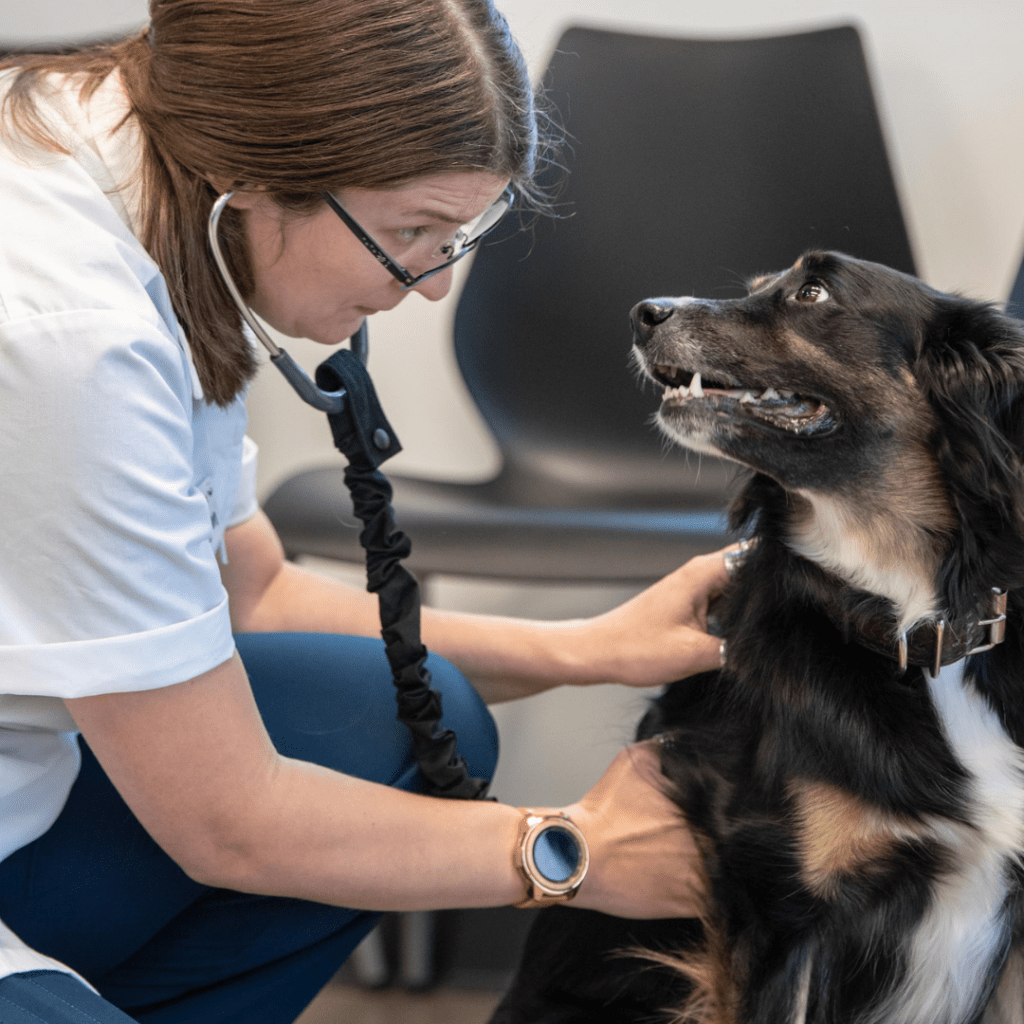The Importance of Physical Activity with Pets in the Prevention of Chronic Diseases

The Importance of Physical Activity with Pets
Engaging in physical activity with pets offers numerous health benefits that extend beyond mere enjoyment. As sedentary lifestyles become increasingly common, the necessity for regular exercise has never been more crucial. With chronic illnesses such as obesity and heart disease on the rise across the United States, the influence of pet ownership in encouraging a more active lifestyle cannot be overstated. Studies reveal a significant correlation between pet ownership and increased physical activity, highlighting an effective strategy for enhancing personal health.
For instance, a simple routine like taking a daily walk with a dog can dramatically boost an individual’s overall activity levels. This not only helps in burning calories but also allows for social interactions, as dog walkers often meet fellow pet enthusiasts. According to research, pet owners are 34% more likely to engage in regular exercise compared to non-pet owners. This statistic underscores how caring for a pet can effectively integrate physical activity into daily life.
Health Benefits of Exercising with Pets
The benefits of incorporating pets into your exercise regimen are multifaceted. Here are some critical advantages:
- Improved cardiovascular health: Regular aerobic exercise, such as walking or jogging with a dog, strengthens the heart and improves circulation. This can help decrease the likelihood of heart disease, a leading health risk in the United States.
- Enhanced mental well-being: Physical activity has long been linked to reductions in stress, anxiety, and depression. Pets can provide emotional support, and having a furry companion during workouts can further uplift spirits and enhance motivation.
- Stronger bonds with pets: Engaging in outdoor activities together fosters a deeper connection between pets and their owners. This companionship not only enhances the physical health of both parties but also contributes to emotional stability for pet owners.
In particular, groups like the American Heart Association have recognized the importance of pet ownership as a motivating factor to promote physical activity. They encourage pet owners to involve their animals in health-focused activities, thereby addressing the rising public health concerns surrounding obesity and related chronic diseases. Moreover, community events such as dog walks or pet-friendly charity runs serve as excellent opportunities for social engagement, exercise, and fun.
Conclusion
The role of pets in promoting a healthy lifestyle cannot be overlooked. Their ability to motivate owners to exercise regularly translates into significant health benefits. By embracing an active lifestyle with our four-legged companions, we can combat chronic health issues effectively while experiencing the joy of companionship. As more individuals recognize this bond, it paves the way for a healthier future for all, where activities are not only beneficial but also filled with joy and purpose.

DON’T MISS: Click here for essential pet travel tips
The Role of Pets in Encouraging an Active Lifestyle
Physical activity is essential for maintaining optimal health and preventing chronic diseases, and pets serve as powerful motivators in this realm. Studies highlight how engaging in activities with pets not only enhances fitness levels but also contributes to overall well-being. For many pet owners, their furry companions are not just pets but integral members of the family, inspiring daily exercise routines that can effectively combat issues like obesity, heart disease, and diabetes.
Looking specifically at dog owners, a notable research study published in the Journal of Physical Activity and Health revealed that dog owners engage in about 30% more physical activity than those who do not own dogs. Walking, running, or playing fetch are all enjoyable activities that encourage movement and significantly increase the chances of meeting recommended exercise levels. This is crucial, given that only about 20% of adults in the United States reach the suggested 150 minutes of moderate aerobic activity each week.
Complementary Benefits of Activities with Pets
Incorporating pets into physical activity routines yields a spectrum of health benefits beyond just exercise. Here are a few key advantages:
- Weight management: Regular walks can help pet owners maintain a healthy weight while combating obesity, which is a precursor to many chronic diseases. The Centers for Disease Control and Prevention (CDC) report that over 70% of adults in the U.S. are overweight or obese.
- Increased motivation: Pets create a sense of obligation that encourages owners to stick to their exercise plans. The companionship of pets turns mundane workouts into fun and engaging experiences, making it easier to adhere to a routine.
- Reduced healthcare costs: Engaging in regular physical activity has been shown to lower healthcare costs related to chronic disease treatment. A study by the American Journal of Public Health concluded that active lifestyles fostered through pet ownership can lead to a reduction in doctor visits and lower medication expenses.
Furthermore, physical activity with pets contributes to a sense of community. Engaging in group activities, such as pet yoga classes or local charity dog walks, strengthens social ties and combats isolation, a significant risk factor for chronic diseases. Social connections have been shown to improve mental health, so when individuals exercise with their pets, they are also nurturing their relational health.
As the understanding of the health implications of sedentary lifestyles grows, so too does the recognition of the significant role pets play in our commitment to an active lifestyle. The intertwining of pet ownership and physical activity has emerged as not only a personal health strategy but also a societal imperative, one that could alter the course of public health trends for the better.
| Category | Description |
|---|---|
| Increased Social Interaction | Engaging in physical activities with pets often leads to interactions with other pet owners, fostering a sense of community. |
| Enhanced Mental Well-being | Regular walks and playtime not only improve physical health but also reduce stress, anxiety, and depression, greatly contributing to overall wellness. |
Physical activity with pets serves a dual purpose: it promotes regular exercise and supports mental health. Moreover, participating in activities like dog walking or agility training can provide a structured way to sustain a fitness routine, which is crucial for preventing chronic diseases such as obesity and diabetes. By integrating pets into physical routines, individuals can achieve fitness goals while enjoying the companionship of their furry friends. It’s a joyful way to make healthy living sustainable and attractive, especially for those who might struggle with traditional exercise practices. Furthermore, the bond developed through shared physical activities significantly enhances both the pet’s and the owner’s quality of life, establishing a powerful connection that encourages a healthier lifestyle. The engaging nature of these activities tends to create a rewarding cycle, pushing individuals towards consistent exercise, which yields long-lasting health benefits.
DISCOVER MORE: Click here to learn how pets can boost your health!
Boosting Mental Health and Preventing Chronic Diseases
While the physical benefits of exercising with pets are clear, the impact on mental health is equally significant in preventing chronic diseases. Engaging with pets has been shown to reduce feelings of anxiety and depression, which can be underlying factors contributing to various health issues. According to a study published in the International Journal of Environmental Research and Public Health, spending time with pets can quickly boost serotonin and dopamine levels, neurotransmitters that play a crucial role in regulating mood and happiness.
The requirement for regular walks or play with pets creates a structured routine that can enhance a sense of purpose and belonging, particularly for individuals experiencing loneliness or social isolation. This routine doesn’t just facilitate physical activity; it reinforces positive behavioral patterns that mitigate the development of chronic stress-related diseases. Stress, linked to elevated cortisol levels, has been associated with chronic conditions such as heart disease, obesity, and diabetes.
Interactive Activities and Their Health Implications
Interactive physical activities with pets are not only beneficial for physical exercise; they also promote cognitive stimulation and social engagement. Taking part in agility training or obedience classes offers both pets and their owners mental challenges and opportunities to engage with others, fostering community connections. The American Psychological Association notes that such interactions are beneficial for emotional resilience and overall mental health.
- Enhanced cognitive function: Engaging with pets through training or games requires mental engagement which can help sharpen cognitive skills, making pet owners more alert and focused. This cognitive boost can counteract age-related decline and has implications for diseases like Alzheimer’s.
- Social support networks: Communities that revolve around pet ownership, such as dog parks or training groups, create an environment that fosters relationships. These social networks can help decrease feelings of isolation, enhancing mental well-being and reducing the risk of chronic diseases associated with loneliness.
- Increased happiness: Everyday interactions, such as cuddling or playing with pets, release oxytocin—the “feel-good” hormone. This natural high can help counteract symptoms of anxiety and depression, indirectly lowering the risk of chronic diseases linked to poor mental health.
Moreover, participating in activities such as dog-friendly races or charity walks not only encourages physical exercise but also serves a greater good. These events can serve as community-building experiences that help to solidify social support structures, proving that the bond between physical activity, pets, and our community can contribute significantly to better overall health. Such practical engagement is paramount in addressing some of America’s worsening health issues.
As research continues to demonstrate the incredible power of pets in motivating physical activity and supporting mental health, it becomes increasingly important to advocate for policies that promote pet ownership as a public health initiative. The synergy between owning pets and engaging in physical activities presents a unique avenue for reducing the substantial healthcare burden posed by chronic diseases in the United States.
DISCOVER MORE: Click here for healthy pet nutrition tips
Conclusion: A Call to Action for Healthier Lives
In summary, engaging in physical activity with pets serves as a powerful and multifaceted strategy in the prevention of chronic diseases. The compelling evidence highlights that not only does exercising with pets improve physical health through increased activity levels, but it also significantly enhances mental well-being. The emotional connections fostered through pet interaction can reduce stress and anxiety, which are key factors in the development of chronic health conditions such as heart disease, diabetes, and obesity.
Moreover, the community-building opportunities presented by group activities like dog training or pet-friendly events create essential social networks that can combat the pervasive issue of loneliness in our society. As research increasingly reveals the health benefits of pet ownership, it is crucial for public health officials and policymakers to recognize and promote these insights.
By advocating for initiatives that facilitate pet ownership and encourage physical activities involving pets, we can pave the way for healthier lifestyles, reduce healthcare costs, and ultimately improve the quality of life for countless individuals. As we move forward, let’s harness the inherent potential that the bond between humans and their pets offers—transforming not only individual health outcomes but also fostering a healthier, more vibrant community.
By prioritizing physical activity with pets as a cornerstone of chronic disease prevention, we can embrace a holistic approach to well-being that truly benefits both body and mind.



